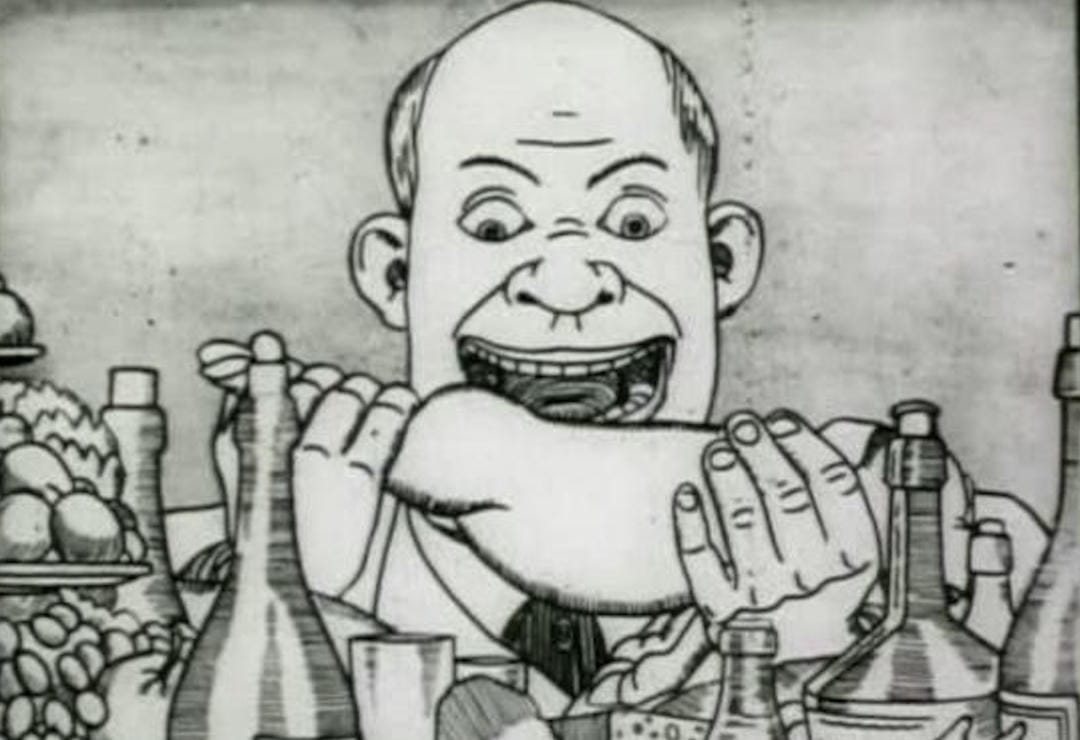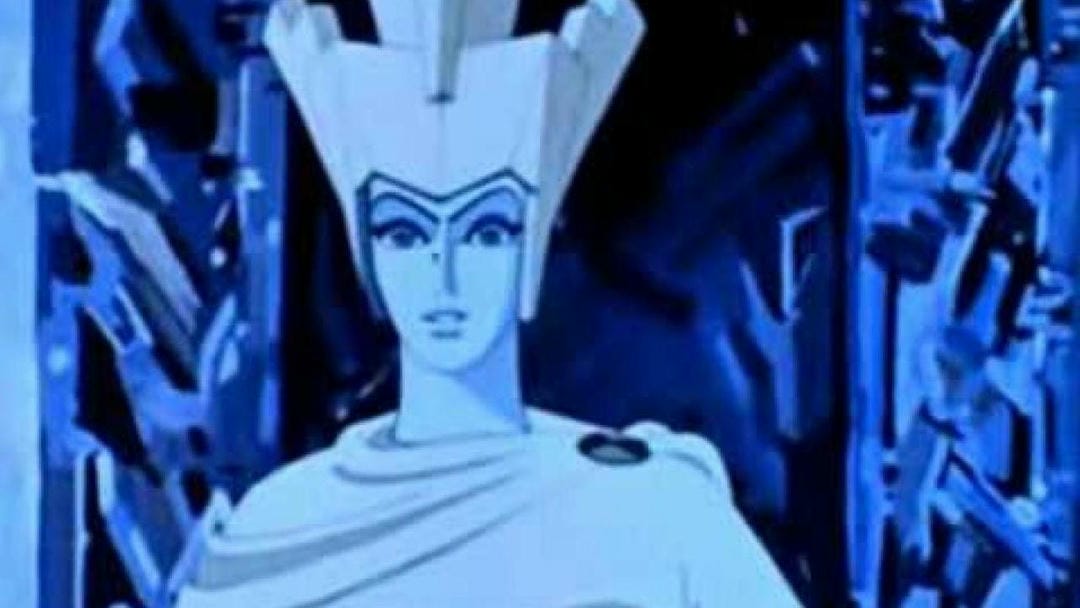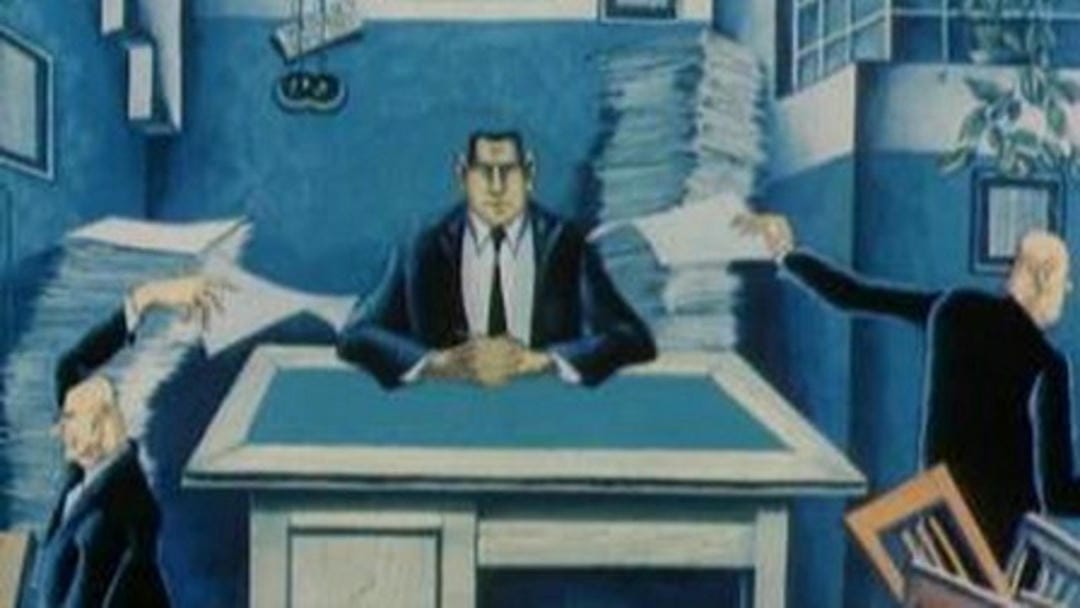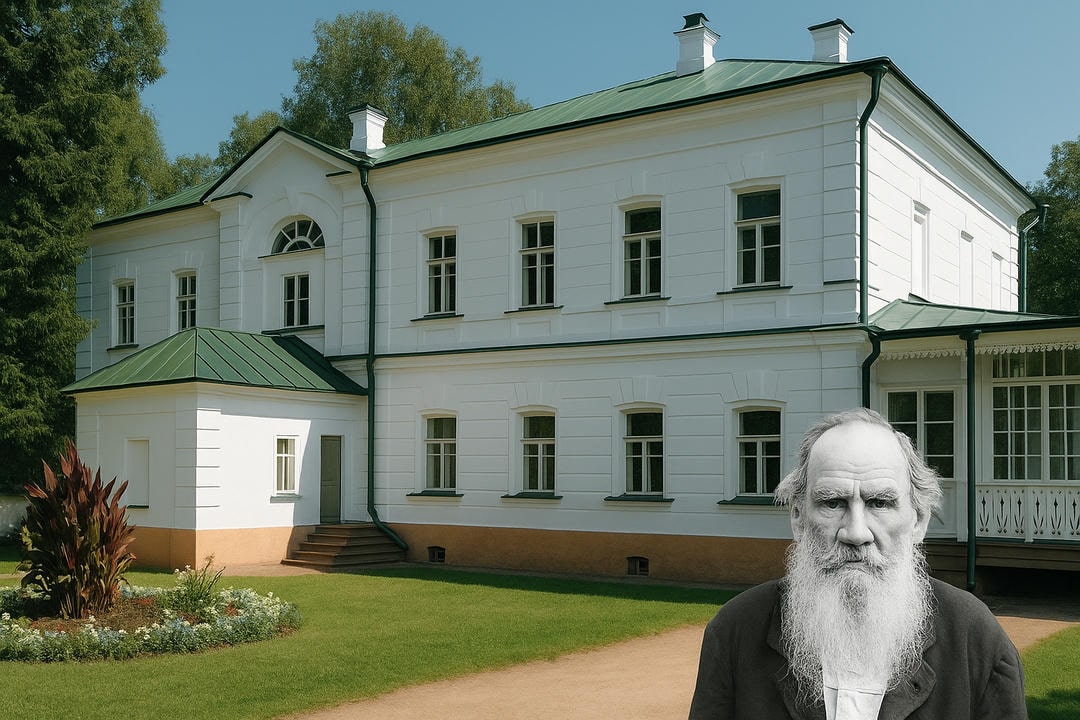Soviet animation, often overshadowed by its Western counterparts, boasts a rich and vibrant history that spans from the early days of the Soviet Union in 1922 to the dissolution of the USSR in 1991. This unique animation industry produced a diverse array of films, ranging from whimsical children’s stories to surreal and thought-provoking adult content. In this blog post, we will explore the evolution of Soviet animation, highlighting key filmmakers, notable films, and the cultural context that shaped this fascinating art form.
The Early Years: 1922-1953
The roots of Soviet animation can be traced back to the early 1920s, a time when the nation was still finding its footing after the revolution. The first surviving animated film from the USSR, Soviet Toys (1924), directed by the influential Dziga Vertov, set the tone for the era. This film, characterized by its crude black-and-white line drawings, was not aimed at children but rather served as a satirical commentary on capitalism, featuring exaggerated caricatures of capitalists. Vertov’s work was a bold statement, using animation as a tool for political and social critique, a theme that would become a hallmark of early Soviet animation.

Another notable film from this period is Interplanetary Revolution (1924), which utilized cutout animation to depict a fantastical narrative of capitalists being banished to Mars. This film exemplified the propaganda-driven nature of early Soviet animation, a theme that would persist throughout the 1920s and beyond. The use of cutout animation allowed for a unique visual style that was both economical and effective in conveying its message. The film’s surreal and imaginative storyline served as a powerful metaphor for the ideological struggles of the time, making it a standout example of how animation could be used to promote political ideals.
The 1920s also saw the emergence of key figures in Soviet animation, such as Ivan Ivanov-Vano, who directed Senka the African, the first Soviet animation intended for children. Ivanov-Vano’s work marked a significant shift in the focus of Soviet animation, demonstrating that the medium could be used to entertain and educate younger audiences. His contributions laid the groundwork for future children’s animations, establishing a tradition of storytelling that would continue to evolve over the decades.
The Brumberg Sisters, Valentina and Zinaida, also made their mark during this time, co-directing The Tale of Tsar Durandai (1934), which was among the first adaptations of classic fairy tales in Soviet animation. The Brumberg Sisters brought a fresh perspective to Soviet animation, blending traditional storytelling with innovative animation techniques. Their work helped to expand the scope of Soviet animation, showing that it could encompass a wide range of genres and styles. This period saw a proliferation of animated films that drew on folklore and literary classics, enriching the cultural landscape of the Soviet Union.
Throughout the 1930s and 1940s, Soviet animation continued to develop, with studios like Soyuzmultfilm becoming major hubs for creative output. Despite the challenges posed by World War II, animators persisted in their craft, producing films that provided escapism and moral support during difficult times. The war years saw a focus on patriotic themes and heroic narratives, reflecting the nation’s struggle and resilience.
Post-war, the late 1940s and early 1950s witnessed a renewed emphasis on children’s animation, with a surge in productions aimed at educating and inspiring the younger generation. This period also saw the introduction of new animation techniques and technologies, as artists experimented with color and sound to create more immersive experiences. The groundwork laid during these early years would pave the way for the golden age of Soviet animation, which would follow in the decades to come.
The early years of Soviet animation were marked by a blend of political commentary and artistic innovation. From the satirical critiques of capitalism to the whimsical adaptations of fairy tales, this period set the stage for the rich and diverse animation industry that would follow. The pioneering work of directors like Dziga Vertov, Ivan Ivanov-Vano, and the Brumberg Sisters established a strong foundation for Soviet animation, influencing generations of animators and leaving a lasting impact on the medium.
The Golden Age: 1953-1964
Following Joseph Stalin’s death in 1953 and Nikita Khrushchev’s subsequent rise, Soviet animation entered a new phase known as the Khrushchev Thaw. This period saw reduced censorship and increased creative freedom for animators. The relaxed political climate allowed artists to explore new themes and styles, leading to a creative boom in the animation industry.

One of the most celebrated films from this era is The Snow Queen (1957), directed by Lev Atamanov. Inspired by Hans Christian Andersen’s fairy tale, the film moved away from the overused rotoscoping technique, allowing for more imaginative and artistic expression. Atamanov’s use of vivid colors and intricate backgrounds created a visually stunning world that captivated audiences. The film’s success at international festivals, including a notable release in the United States, showcased the global appeal of Soviet animation. The Snow Queen became a landmark for the industry, proving that Soviet animators could compete on the world stage with their unique storytelling and artistic prowess.
The Brumberg Sisters, Valentina and Zinaida, continued to innovate during this period, producing Flight to the Moon (1953), the first Soviet-animated science fiction film in decades. This film marked a significant milestone in Soviet animation, blending scientific curiosity with imaginative storytelling. Flight to the Moon not only entertained audiences but also inspired a generation of young viewers to dream about the possibilities of space exploration. The Brumberg Sisters’ work during this era showcased their ability to adapt to changing times and audiences, contributing to the diverse landscape of Soviet animation.
This era also saw the rise of more experimental and adult-oriented material, with films like Story of One Crime (1962) by Fyodor Khitruk. Khitruk’s film explored darker themes and psychological complexities, pushing the boundaries of what was considered acceptable in animation. Story of One Crime delved into the mind of a criminal, examining the motivations and consequences of his actions. This introspective approach was a departure from the more straightforward narratives of earlier animations, reflecting the growing maturity and sophistication of Soviet animation.
Khitruk’s work, along with that of other experimental animators, opened new avenues for storytelling in animation. The use of symbolism, abstract imagery, and complex narratives allowed animators to tackle serious subjects and explore the human condition in ways that were previously unseen in the medium. This period saw a proliferation of short films that challenged conventional wisdom and offered new perspectives on society and individual experiences.
The Golden Age of Soviet animation was also marked by a surge in the production of animated series for television. Shows like Vinni-Pukh (1969), based on A.A. Milne’s Winnie-the-Pooh stories, became beloved classics, introducing a new generation of children to the world of animation. These series often featured simple, heartwarming stories that resonated with young viewers, fostering a love for animation that would last a lifetime.
The animation studios during this period, such as Soyuzmultfilm, became hubs of creative energy, attracting talented artists from across the Soviet Union. The collaborative environment fostered innovation and experimentation, leading to a rich diversity of styles and techniques. Animators drew inspiration from a wide range of sources, including folklore, literature, and contemporary art, resulting in a vibrant and eclectic body of work.
The Golden Age of Soviet animation left an indelible mark on the industry, both domestically and internationally. The films and series produced during this era showcased the unique voice and vision of Soviet animators, establishing a legacy that would continue to influence the medium for decades to come. The creative freedom and artistic innovation of this period paved the way for future generations of animators, inspiring them to push the boundaries of the medium and tell stories that resonate with audiences worldwide.
The Experimental Era: 1964-1982
During Leonid Brezhnev’s leadership, Soviet animation saw a surge of experimentation influenced by the psychedelic movement. This period was defined by creative exploration, with animators exploring new storytelling methods and visual styles. The cultural shifts of the 1960s and 1970s, including the global influence of psychedelic art and music, found their way into Soviet animation, resulting in a unique blend of avant-garde techniques and socially conscious narratives.
Directors like Andrey Khrzhanovskiy and Fyodor Khitruk led this experimental movement, creating satirical shorts that critiqued bureaucracy and the absurdities of life in a totalitarian society. Khrzhanovskiy’s There Lived Kozyavin (1966) and Glass Harmonica (1968) exemplified this trend, using surreal imagery to convey deeper messages about artistic freedom and societal constraints. These films often featured abstract visuals and non-linear storytelling, challenging viewers to interpret the symbolism and underlying themes.

Khrzhanovskiy’s work was particularly noted for its poetic and philosophical depth. There Lived Kozyavin used a mix of live-action and animation to tell the story of a man struggling against oppressive societal forces. The film’s dreamlike sequences and surreal imagery created a powerful commentary on the human condition, resonating with audiences who saw parallels to their own experiences. Glass Harmonica, meanwhile, was a visual feast, using intricate glass animations to explore themes of creativity and the fragility of life. The film’s innovative use of music and sound design added an extra layer of emotional depth, making it a standout example of the era’s experimental spirit.
Fyodor Khitruk continued to push the boundaries of animation with films like Film, Film, Film (1968) and The Island (1973). Film, Film, Film was a satirical take on the film industry itself, using humor and absurdity to critique the bureaucratic processes and creative limitations that animators faced. The film’s self-referential nature and witty dialogue made it a favorite among animation enthusiasts and industry professionals alike. The Island, on the other hand, was a more introspective work, exploring themes of isolation and the search for meaning in a chaotic world. The film’s use of minimalist animation and symbolic imagery created a contemplative atmosphere, inviting viewers to reflect on their own lives and experiences.
During this time, beloved characters like Cheburashka and Gena the Crocodile emerged, captivating audiences with their charm and humor. Roman Kachanov’s puppet stop-motion adaptations of Eduard Uspensky’s stories became cultural icons, with Cheburashka even serving as a mascot for the Russian Olympic team. Cheburashka, a lovable and somewhat clumsy creature, quickly became a symbol of innocence and friendship, resonating with children and adults alike. The character’s simple yet expressive design, combined with Kachanov’s masterful use of stop-motion animation, created a timeless appeal that transcended cultural and generational boundaries.
Gena the Crocodile, Cheburashka’s loyal and kind-hearted friend, added another layer of warmth and humor to the stories. The dynamic between the two characters, with Cheburashka’s playful naivety and Gena’s wise and patient demeanor, created a heartwarming narrative that touched the hearts of viewers. The films featuring Cheburashka and Gena, such as Cheburashka (1969) and Cheburashka Goes to School (1983), became staples of Soviet childhood, fostering a sense of nostalgia and fondness that continues to this day.
The experimental era of Soviet animation was also marked by a renewed interest in folklore and traditional stories, reimagined through the lens of modern animation techniques. Films like The Bremen Town Musicians (1969), directed by Inessa Kovalevskaya, blended classic fairy tales with contemporary music and visual styles, creating a fresh and engaging take on familiar stories. The film’s use of vibrant colors, dynamic animation, and catchy songs made it an instant hit with audiences, showcasing the versatility and creativity of Soviet animators.
The animation studios during this period, such as Soyuzmultfilm, became hotbeds of creative experimentation, attracting a diverse range of artists and filmmakers. The collaborative environment fostered a spirit of innovation and risk-taking, leading to a rich diversity of styles and techniques. Animators drew inspiration from a wide range of sources, including international art movements, avant-garde cinema, and contemporary literature, resulting in a body of work that was both eclectic and cutting-edge.
The experimental era of Soviet animation left a lasting impact on the industry, both domestically and internationally. The films and characters created during this period showcased the unique voice and vision of Soviet animators, establishing a legacy that would continue to influence the medium for decades to come. The creative freedom and artistic innovation of this period paved the way for future generations of animators, inspiring them to push the boundaries of the medium and tell stories that resonate with audiences worldwide.
The Late Soviet Era: 1982-1991
As the Soviet Union neared its end, animation continued to develop, though with fewer widely recognized works. This period saw the rise of new filmmakers like Garri Bardin, who brought fresh perspectives and innovative techniques to the medium. Bardin, in particular, became known for his experimental stop-motion animations, which often incorporated everyday objects in creative ways. His short films, such as Conflict (1983) and Banquet, displayed a distinctive blend of artistic ingenuity and social critique.
Bardin’s work stood out for its unique visual style and thought-provoking narratives. In Conflict, he used stop-motion animation to explore themes of tension and resolution, creating a visually striking and emotionally resonant film. Banquet, on the other hand, offered a satirical take on societal norms and expectations, using humor and absurdity to convey deeper messages about human behavior and social dynamics. Bardin’s innovative use of common items in his animations brought a fresh and relatable perspective to the medium, making his work both accessible and impactful.
The late 1980s also witnessed a shift towards darker and more introspective themes in animation. Films like There Will Come Soft Rains, based on Ray Bradbury’s short story, explored the grim aftermath of a nuclear apocalypse. This film, directed by Nazim Tulyakhodzayev, used haunting imagery and a somber narrative to examine the devastating consequences of nuclear war. The animation’s stark visuals and poignant storytelling created a powerful commentary on the dangers of unchecked technological advancement and the fragility of human existence.
This era was marked by a sense of uncertainty and reflection, as filmmakers responded to the shifting political landscape and the impending collapse of the Soviet Union. The animation of this time mirrored the societal changes and the prevailing mood of introspection and doubt. Animators turned to more profound and thought-provoking subjects, using their art to explore the complexities of a world in flux. This shift towards darker narratives was a departure from the more lighthearted and whimsical animations of earlier decades, highlighting the evolving role of animation in Soviet society.
One notable example of this trend was the work of Aleksandr Petrov, who emerged as a prominent figure in Soviet animation during this period. Petrov’s films, such as The Cow (1989), explored themes of rural life and the struggles of everyday people. His use of intricate, hand-drawn animation and rich, evocative storytelling created a unique and emotionally resonant body of work. Petrov’s animations often featured a blend of realism and fantasy, using vivid imagery and symbolism to convey deeper messages about human experience and the natural world.
Another significant filmmaker of this era was Andrei Khrzhanovsky, who continued to push the boundaries of animation with his experimental and often surreal works. Khrzhanovsky’s films, such as The Lion with the White Beard (1986), used a mix of live-action and animation to explore complex themes and ideas. His innovative use of visual effects and unconventional storytelling techniques created a unique and thought-provoking viewing experience, challenging audiences to engage with the material on a deeper level.
Despite the challenges and uncertainties of the time, the late Soviet era saw a continued commitment to artistic expression and innovation in animation. Filmmakers pushed the boundaries of the medium, experimenting with new techniques and styles to tell their stories. The animation of this period served as a mirror to the societal changes and uncertainties of the era, providing a unique perspective on the final years of the Soviet Union.
The work of animators during this time left a lasting impact on the medium, both within the Soviet Union and internationally. Their willingness to explore darker and more complex themes paved the way for future generations of animators, inspiring them to use the medium as a tool for social commentary and artistic expression. The late Soviet era of animation stands as a powerful example of the resilience and creativity of artists in the face of uncertainty and change.
Additionally, the late Soviet era saw a rise in animated films that tackled environmental themes and the consequences of industrialization. Films like The Cat Who Walked by Herself (1988), directed by Aleksandr Tatarskiy, used animation to explore the impact of human activities on the natural world. This film, along with others of the time, highlighted the growing awareness of environmental issues and the need for conservation efforts.
The late Soviet era also witnessed a surge in animated documentaries and biographical films. These works often blended historical footage with animated sequences to tell the stories of notable figures and events. For example, The Life of Mikhail Lomonosov (1986), directed by Ivan Aksenchuk, used animation to bring to life the story of the renowned Russian scientist and polymath. This film, along with others like it, showcased the versatility of animation as a storytelling medium, capable of educating and inspiring audiences.
In addition, the late Soviet era saw a continued exploration of folklore and traditional stories in animation. Filmmakers drew inspiration from a rich tapestry of cultural narratives, reimagining them through the lens of modern animation techniques. Films like The Tale of the Fisherman and the Fish (1988), directed by Natalia Lukinykh, brought classic fairy tales to life with vibrant animation and engaging storytelling. These works highlighted the enduring appeal of traditional stories and their relevance to contemporary audiences.
The late Soviet era of animation was a time of creative exploration and innovation, as filmmakers pushed the boundaries of the medium to tell compelling and thought-provoking stories. Despite the challenges and uncertainties of the time, animators continued to produce works that left a lasting impact on the medium and inspired future generations of artists.
Cultural Impact and Legacy
Soviet animation has left an indelible mark on the global animation landscape. Its unique blend of artistic styles, cultural references, and social commentary has influenced generations of animators worldwide. Notably, acclaimed Japanese director Hayao Miyazaki has cited films like The Snow Queen and Hedgehog in the Fog (1977) as significant inspirations for his own work.
The accessibility of many Soviet animated films on platforms like YouTube has allowed a new generation of viewers to discover and appreciate this rich artistic heritage. As we continue to explore the world of animation, the legacy of Soviet filmmakers serves as a reminder of the power of creativity and storytelling in the face of adversity.
Soviet animation remains a fascinating and essential part of the global animation narrative. Whether you’re a seasoned animation enthusiast or a curious newcomer, exploring the world of Soviet animation promises a rewarding and enlightening experience.




